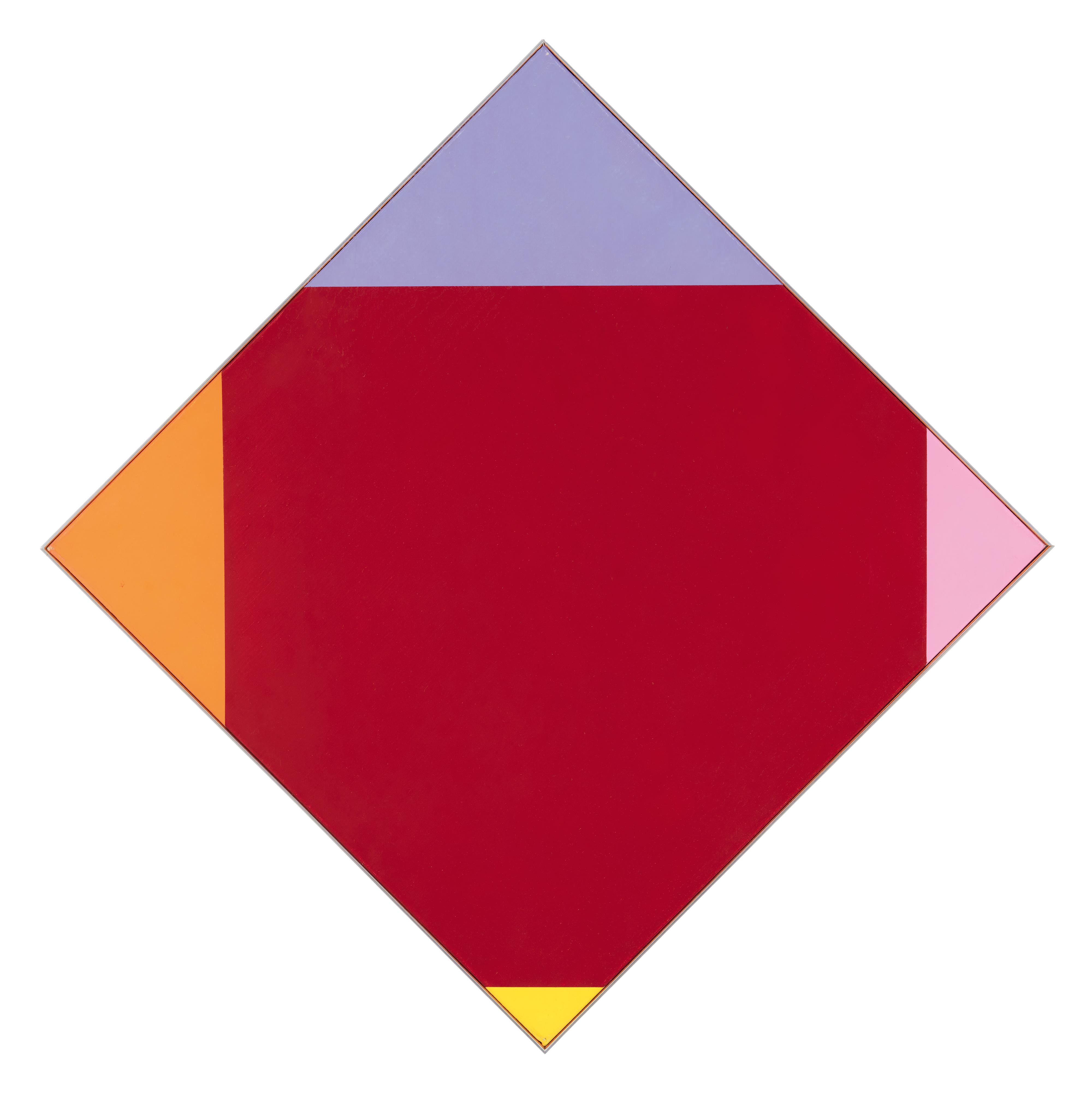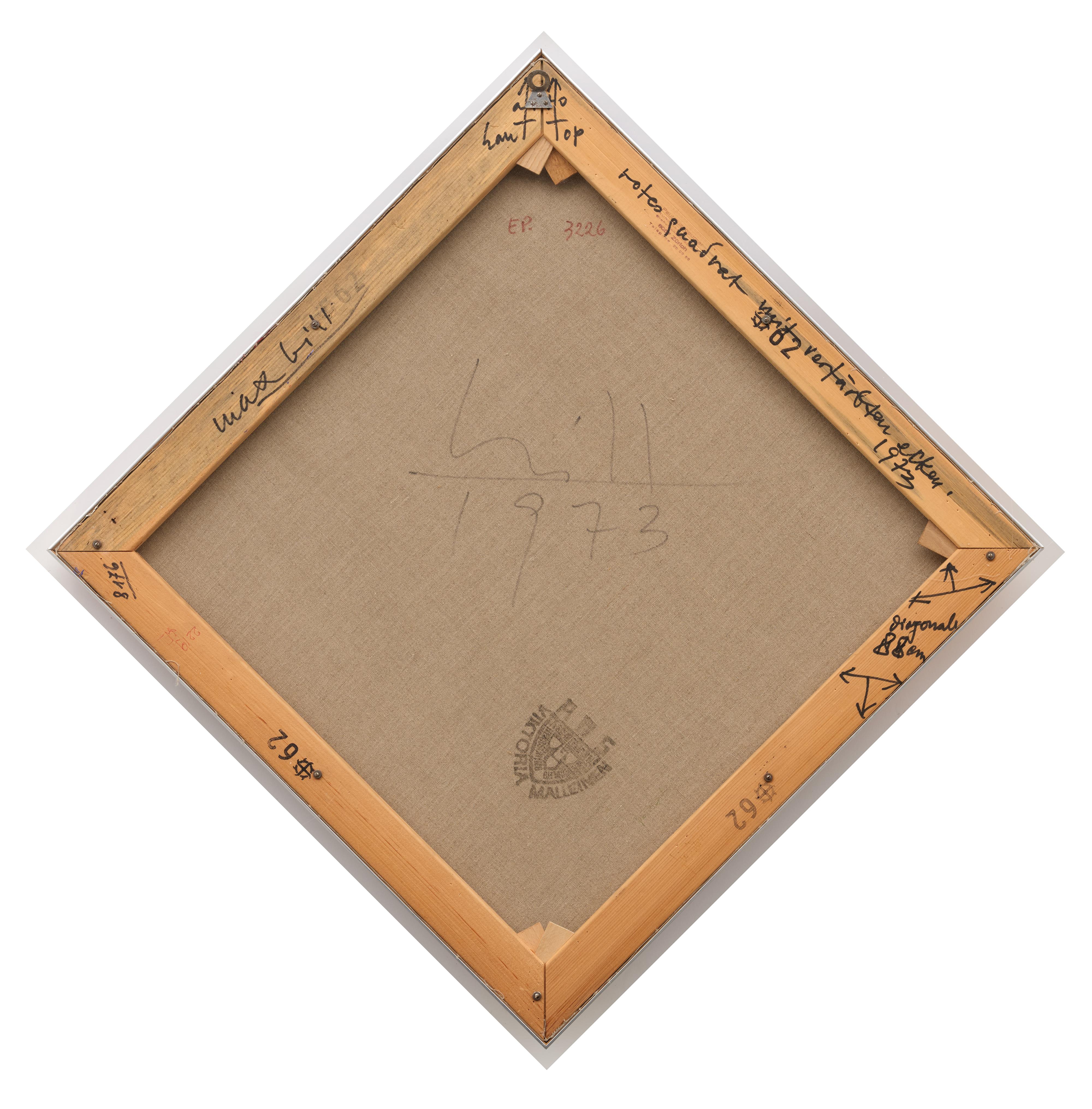Max Bill
Rotes Quadrat mit verfärbten Ecken
1973
Oil on canvas. 88 x 88 cm. Framed and framed under Plexiglass. Signed, dated and titled 'bill 1973' on canvas verso. Signed, dated, titled and inscribed 'max bill rotes quadrat mit verfärbten ecken 1973' on stretcher and with direction arrow, direction information and hanging instruction. - Minor traces of age.
The Swiss painter, sculptor, architect, graphic designer, and publicist Max Bill pertains to the most significant representatives of concrete art. During the 1920s, he studied at Bauhaus Dessau where the unity of design and function as it was taught there influenced him strongly. In his formulation of concrete art in an exhibition catalogue of the Kunsthaus Zürich in 1936, he clarified and expanded the definition of this art movement; Bill became one of the protagonists of the “Zürcher Schule der Konkreten“ (Zurich School of Concrete Art). Following a teaching position at Zurich University of the Arts, he pertained to the co-founders of the Ulm School of Design and became its first vice chancellor. He strived for the continuation of the Bauhaus concept and brought Bauhaus artists such as Josef Albers and Johannes Itten to Ulm as teachers.
Characteristic of his painterly oeuvre is the square standing on one corner as a pictorial surface, with which he experimented with clearly delineated colour fields in order to consciously influence the viewer through the harmony, tension, or concentration conveyed. “Rotes Quadrat mit verfärbten Ecken“ (red square with coloured corners) assigns a different colour value and size to each of the four corners. The central red field of colour and thus the focal point of the picture is seemingly shifted to the lower right by the chosen arrangement, so that the viewer is constantly struggling to balance the square, finding himself in a state of tense concentration.
Certificate
We would like to thank the Max, Binia + Jakob Bill Foundation, Adligenswil, for helpful information.
Provenance
Private collection, Bavaria




